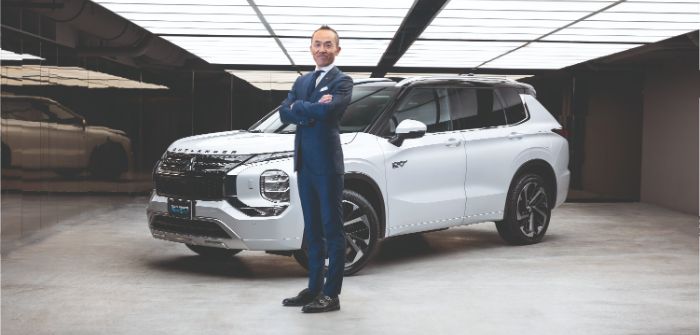How does the Outlander PHEV reflect Mitsubishi’s approach to electrification?
Mitsubishi Motors has a long development history in EVs and PHEVs. We think that PHEV is currently the best solution for SUVs like the Outlander because of battery weight and capacity. If we developed an Outlander BEV, we would have to put four or five times the batteries of the PHEV in it, making it 400-500kg heavier than currently. That’s like always driving with six people on board so it’s tough to have [good] driving performance, and even with Li-ion batteries we would have a limit of 300km electric vehicle range. But we like the customer to have a smooth, EV-like driving experience, so we basically developed an electric vehicle that drives by electric motor [most of the time] and put the engine in to generate power. The concept is quite different from other plug-ins.
Tell us about the research and development structure at your Okazaki base.
As well as the plant, we have styling, engineering design and testing. Everything is in one place. Within engineering we have divisions including testing, powertrain, and body and vehicle. I take care of them all. Each division undertakes projects for different vehicles such as the Outlander or RVR.
How does the collaboration with the Renault-Nissan-Mitsubishi Alliance work?
The Alliance is very beneficial for us because our workload is not so large. For a vehicle like the Outlander PHEV, it is better that they [Nissan] develop the platform part and we can concentrate on the PHEV system or calibration. We can share common technology, like the rear motor in the Outlander PHEV, which is also used for the Nissan Ariya. When C19 meant that we could not travel to the US for local ADAS calibration, Nissan supported our staff in Ann Arbor, because the X-Trail was already done and uses the same system, although it still took about double the time.
How did the design of the Outlander PHEV influence the platform it’s based on?
Originally we had our own, unique Mitsubishi platform ideas. But after we joined the Alliance in 2016, my boss asked me to go to Nissan to see if our concept for Outlander could be adapted to their [CMF-CD] platform. They had already built an advanced prototype car [for X-Trail]. Of course, our PHEV is heavier than a pure ICE, and we had to incorporate requirements like the third-row seat and the larger-capacity rear electric motor. We had daily discussions with the Nissan guys on how to implement those ideas.
Does that mean that Nissan did the early crash testing, too?
Yes. Nissan crash-tested the advanced prototype for the Outlander PHEV, but we tested the production prototype ourselves. Crash testing is completed almost entirely in CAE before we confirm performance with an actual test.
How do you ensure your cars retain ‘Mitsubishi-ness’?
The Super All-Wheel Control [S-AWC] AWD system is unique to Mitsubishi. The complete PHEV system is also Mitsubishi’s, although some components are used as Alliance common parts. S-AWC and our long experience with electrification are Mitsubishi Motors’ two strong technical foundations and both are used in the latest Outlander PHEV. Apart from that, we design our cars individually and once completed, we tune and calibrate them ourselves, in terms of the feel from the ‘innovative pedal’ for one-pedal driving in the Outlander PHEV, for example.
Kentaro Honda joined Mitsubishi in 1994. Beginning in body engineering, his career includes a five-year stint at MMC’s former plant in Illinois. He now heads many of the brand’s development activities and is segment chief engineer for the RVR and the Outlander, including the 2023 PHEV.


